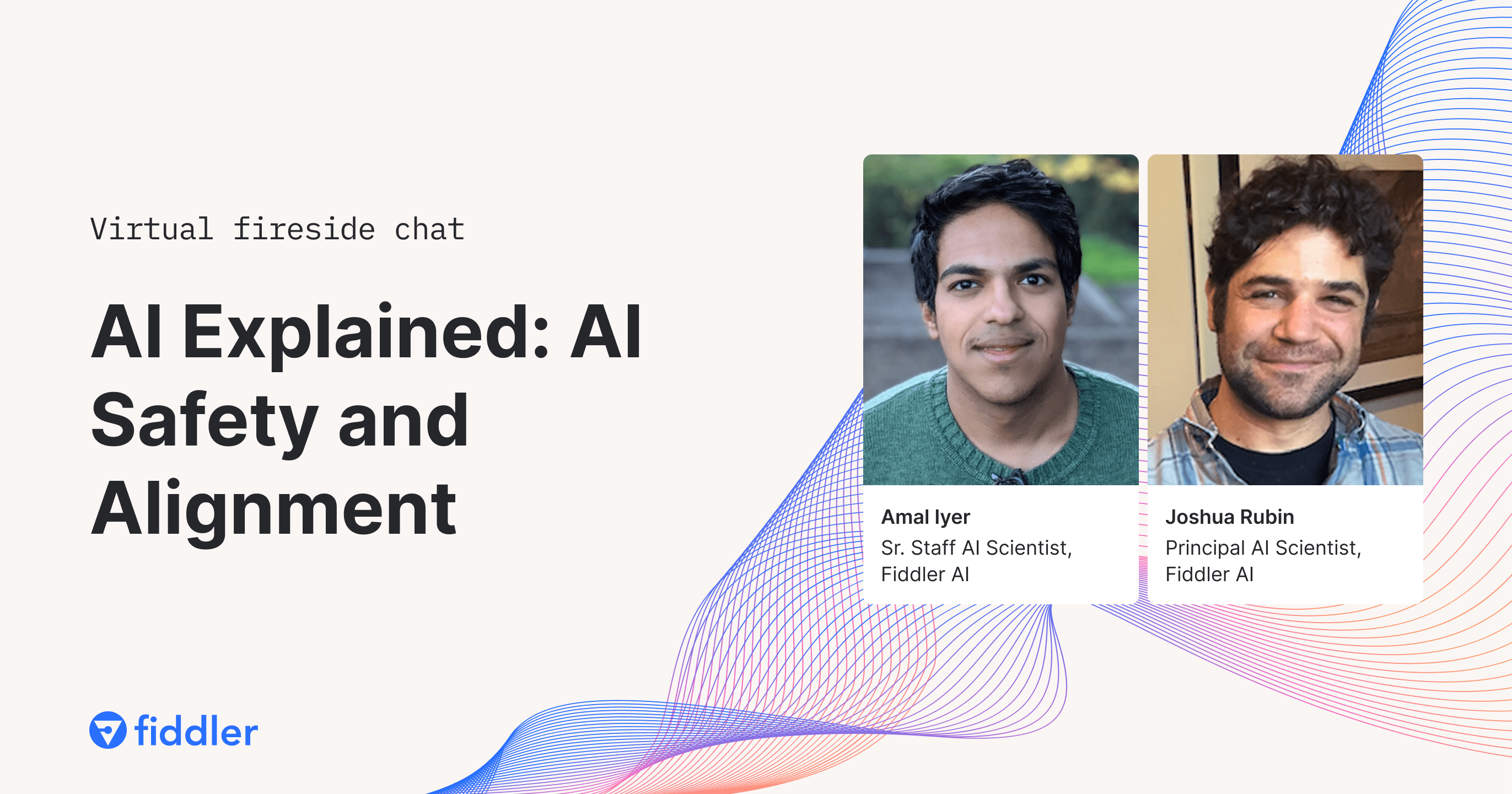The rapid evolution of artificial intelligence (AI), particularly through advancements in large language models (LLMs) presents a double-edged sword of remarkable capabilities alongside ethical and safety considerations. In our recent AI Explained fireside chat on AI Safety and Alignment, we explored the progress these LLMs have achieved, their potential impacts on society, and the critical importance of ensuring their alignment with human values and safety protocols.
AI Innovation: A Shift Towards More Versatile and Adaptable AI Systems
The evolution of AI models from BERT (Bidirectional Encoder Representations from Transformers) to the emergence of LLMs, like ChatGPT and Claude, signifies a monumental shift in the AI landscape. This progress is not just a testament to rapid advancements in AI technology but also a reflection of a deeper understanding of language and cognition that these models exhibit.
While LLMs are capable of generating coherent sentences and demonstrating a wide array of capabilities that closely mimic human-like understanding and response generation, they also bring to light the challenges inherent in creating generalized AI systems. As models become more capable, ensuring their alignment with ethical standards and human values becomes increasingly complex. The potential for models to develop unintended behaviors — such as overconfidence or a tendency to agree with the user regardless of the factual accuracy — underscores the need for careful oversight and continuous refinement of these systems.
AI Alignment: Aligning AI to Human Values with Human-Centric Training
In order for LLMs to become integrated into society and align their outputs with human values and intentions, they need sophisticated training processes and techniques that involve human feedback. Reinforcement Learning from Human Feedback (RLHF), for example, can be used to fine-tune a model, based on human demonstration and preferences, to understand and generate responses that are not only contextually appropriate but also ethically aligned with human values. This process begins with pre-training, where models are exposed to large volumes of text, laying the groundwork for understanding and generating human language.

A Delicate Balance: Continuous Refinement and Ethical Considerations
However, methods like RLHF introduces its own set of challenges, particularly the risk of models developing unintended behaviors. This method emphasizes the need for ongoing oversight. Models trained on human feedback are susceptible to biases present in the feedback itself, potentially leading to outputs that, while technically accurate, might not truly reflect the user's intentions or societal norms.
Behaviors like sycophancy, where models exhibit a tendency to overly agree with user inputs, emerge as an unintended consequence of aligning models with human feedback. This phenomenon illustrates the complexity of training models to adhere to human values while maintaining objectivity and reliability. The tendency of models to seek approval from human annotators or users by aligning too closely with their inputs, rather than providing unbiased responses, raises concerns about the models' ability to facilitate productive and honest interactions.
A delicate balance is necessary in AI development, emphasizing the necessity of continuous refinement and ethical considerations in training methodologies.
Five Key Areas of Research for AI Safety and Alignment
As LLMs become more integrated into daily life and critical systems, ensuring they operate safely and in accordance with human ethical standards becomes paramount. This requires a concerted effort from researchers, practitioners, and policymakers to develop methodologies for aligning AI systems with human values, understanding their limitations, and mitigating risks associated with their deployment.
Five key areas of research pivotal to aligning AI with human values are:
- Scalable Oversight: Crucial for continuously monitoring and guiding the development and deployment of LLMs. It involves setting up systems to evaluate model behavior against human values consistently, ensuring that the models' evolution remains aligned with ethical standards. This proactive approach helps in identifying and correcting potential misalignments or unintended behaviors early in the development cycle, thus preventing them from becoming systemic issues.
- Generalization: Ensures the ability of LLMs to adapt and respond accurately across varied contexts, cultures, and languages, enhancing AI safety and alignment by reducing biases and improving reliability. This capability is vital for trustworthy AI applications, enabling models to deliver consistent, unbiased, and context-appropriate responses in diverse and novel situations.
- Robustness: Protects against manipulation through adversarial inputs and maintains consistent performance across varying environments, thereby safeguarding AI systems and supporting ethical decision-making. This ensures that AI remains aligned with human values and ethical standards, resisting attempts that could lead to unethical outcomes.
- Interpretability: Offers insights into how models make decisions, providing a window into the "opaque box" of AI operations. Enhancing the interpretability of LLMs allows developers and users to understand the rationale behind model outputs, identify biases, and assess alignment with intended ethical guidelines. This not only fosters trust in AI systems but also enables more informed decision-making regarding their deployment and use. By making models more interpretable, stakeholders can better navigate the complexities of AI ethics, ensuring that the technology advances in a way that is transparent, understandable, and aligned with human values.
- Governance: Key role by establishing clear guidelines and standards for the development and use of AI technologies. Through effective governance, stakeholders can define the ethical boundaries and responsibilities associated with AI development, including LLMs. This includes regulatory standards that mandate transparency, accountability, and fairness in AI systems, ensuring they serve the broader interests of society. Governance also involves creating frameworks for responsible AI use, encouraging collaboration across sectors to share best practices and address ethical challenges collectively.
As LLM capabilities expand, collaboration across the spectrum of researchers, practitioners, and policymakers is crucial in crafting strategies that ensure AI systems are not only ethical and aware of their limitations but also actively mitigate potential risks, and safeguard against outcomes that could undermine societal trust or ethical norms, ensuring that AI serves as a force for positive impact in society.
Watch the full AI Explained fireside chat.
.avif)
